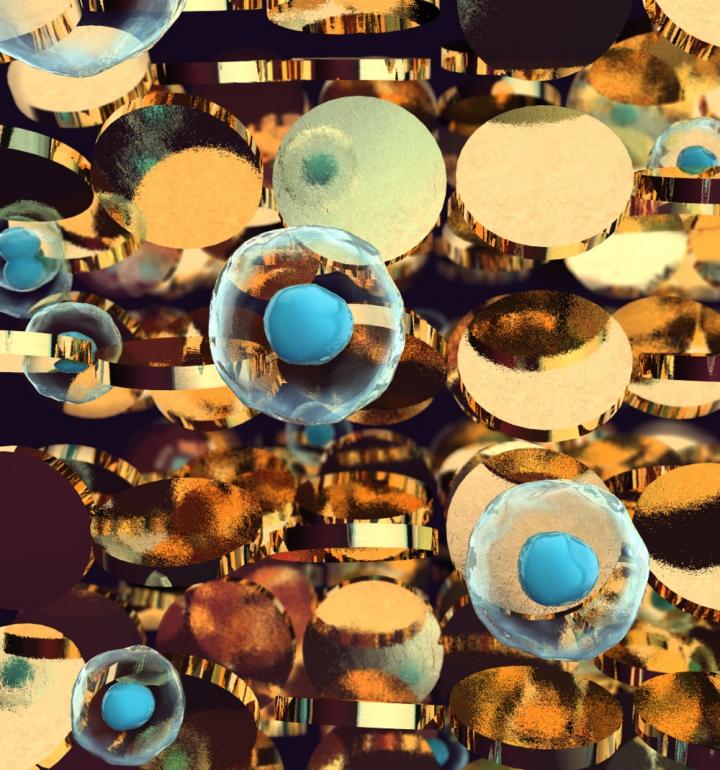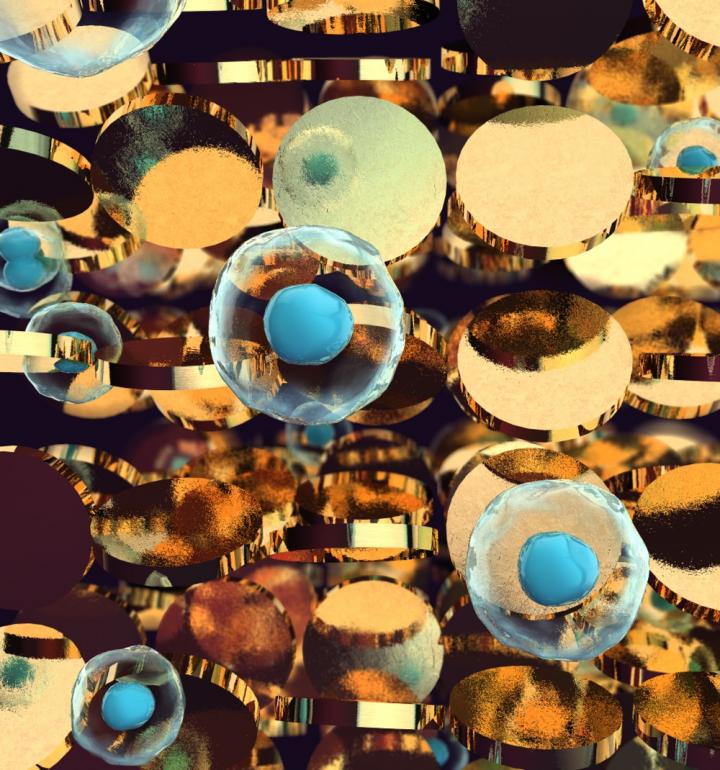
Credit: Texas A&M University
Formation of new blood vessels, a process also known as angiogenesis, is one of the major clinical challenges in wound healing and tissue implants. To address this issue, researchers from Texas A&M University have developed a clay-based platform to deliver therapeutic proteins to the body to assist with the formation of blood vessels.
The team is led by members of the Inspired Nanomaterials and Tissue Engineering Lab in the Department of Biomedical Engineering. They have developed technology that introduces a new type of two-dimensional clay, also known as nanosilicates, that delivers multiple specialized proteins called growth factors into the body to stimulate new blood vessel formation. To allow blood vessels time to form, the clay is designed to prolong the release through its high surface area and charged characteristics, according to biomedical engineering assistant professor Dr. Akhilesh K. Gaharwar.
"Clay nanoparticles work like tiny weak magnets that hold the growth factors within the polymeric hydrogels and release very slowly," Gaharwar said. "Sustained and prolonged release of physiologically relevant doses of growth factors are important to avoid problems due to high doses, such as abrupt tissue formation."
Co-investigator Dr. Kayla Bayless from the Department of Molecular and Cellular Medicine in the Texas A&M Health Science Center said the clay also keeps the growth factors organized, preventing abnormal growth and moderating activity of surrounding cells.
Gaharwar said by establishing clay nanoparticles as a platform technology for delivering the growth factors, the research will have a significant impact on designing the next generation of bioactive scaffolds and implants.
###
The research was recently published in Advanced Biosystems and is funded by the Division of Chemical, Bioengineering, Environmental and Transport Systems of the National Institute of Science, the National Institute of Biomedical Imaging and Bioengineering of the National Institutes of Health and by the National Science Foundation.
Media Contact
Aubrey Bloom
[email protected]
http://www.tamu.edu
Original Source
https://engineering.tamu.edu/news/2018/08/gaharwar-team-develop-new-way-to-grow-blood-vessels.html http://dx.doi.org/10.1002/adbi.201800092





